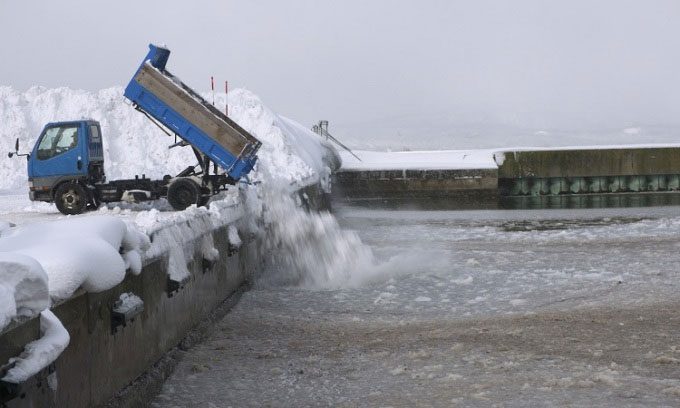In Aomori City, located in northeastern Japan, authorities are developing a plan to generate electricity from excess snow to ensure a renewable energy source and minimize power outages.

Snow removal truck in Aomori. (Photo: CNN).
This project is a collaboration between Forte Co, a technology company, and the University of Electro-Communications in Tokyo (UEC). It involves utilizing the temperature difference between stored snow and the surrounding air to power turbines. Electricity is generated when the ambient air’s temperature causes a cooling liquid to evaporate using the stored snow. Generating electricity from stored snow offers an ecological, safe, and cost-effective energy source, Tech Times reported on January 8.
Aomori experiences heavy snowfall annually, with snow removal costs recently reaching a record high of $55 million for the fiscal year ending March 2021. Instead of disposing of the excess snow, the city government and its partners decided to utilize it for this project. According to TripsToDiscover, Aomori City is the snowiest place on Earth, receiving an average of 792 cm of snow each year. The city is situated at the highest point of the Hakkoda Mountains, contributing to its significant snowfall. Despite the harsh winter weather, it remains home to at least 299,000 residents.
On December 16, 2022, Forte staff installed insulation materials in a swimming pool at an abandoned elementary school to keep the snow from melting. Before electricity generation can begin in spring, authorities need to conduct further research on snow preservation and determine the quality of the generated electricity. They must address several challenges, including finding a large-scale facility for snow storage and ensuring that the air is heated during the cold season. Forte is considering using heat from hot springs to achieve a significant temperature differential.
If successful, this unique renewable energy source could not only supply a new type of electricity for Aomori but also promise the creation of an entirely new industry in the region.


















































